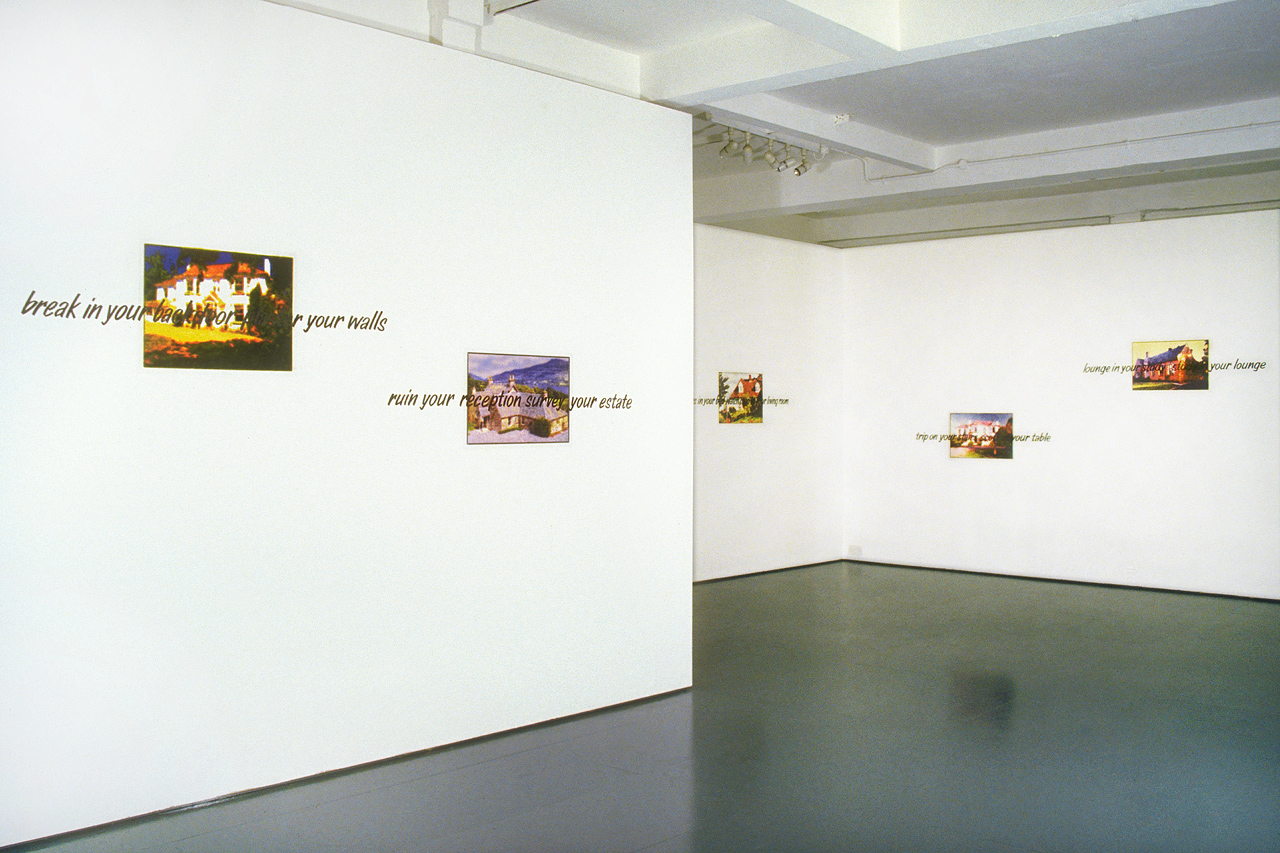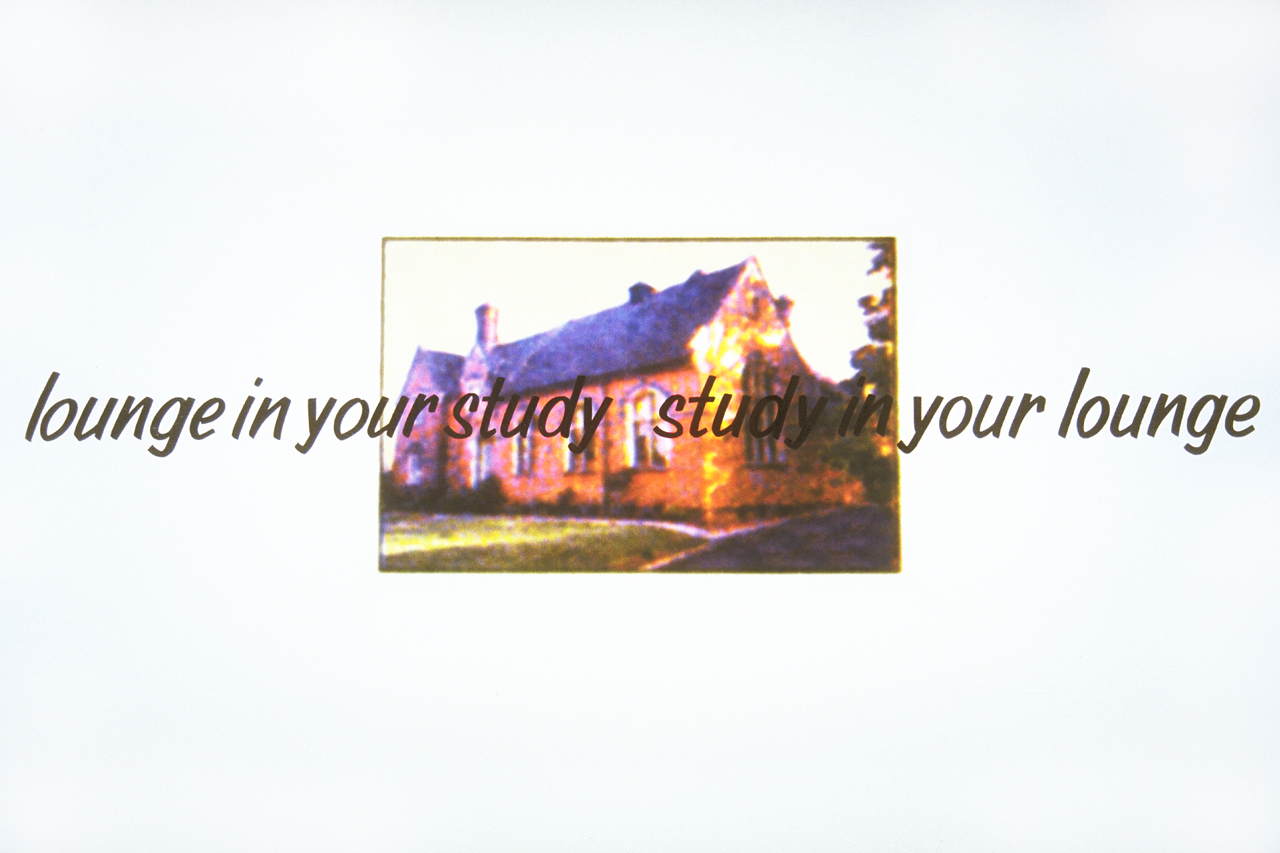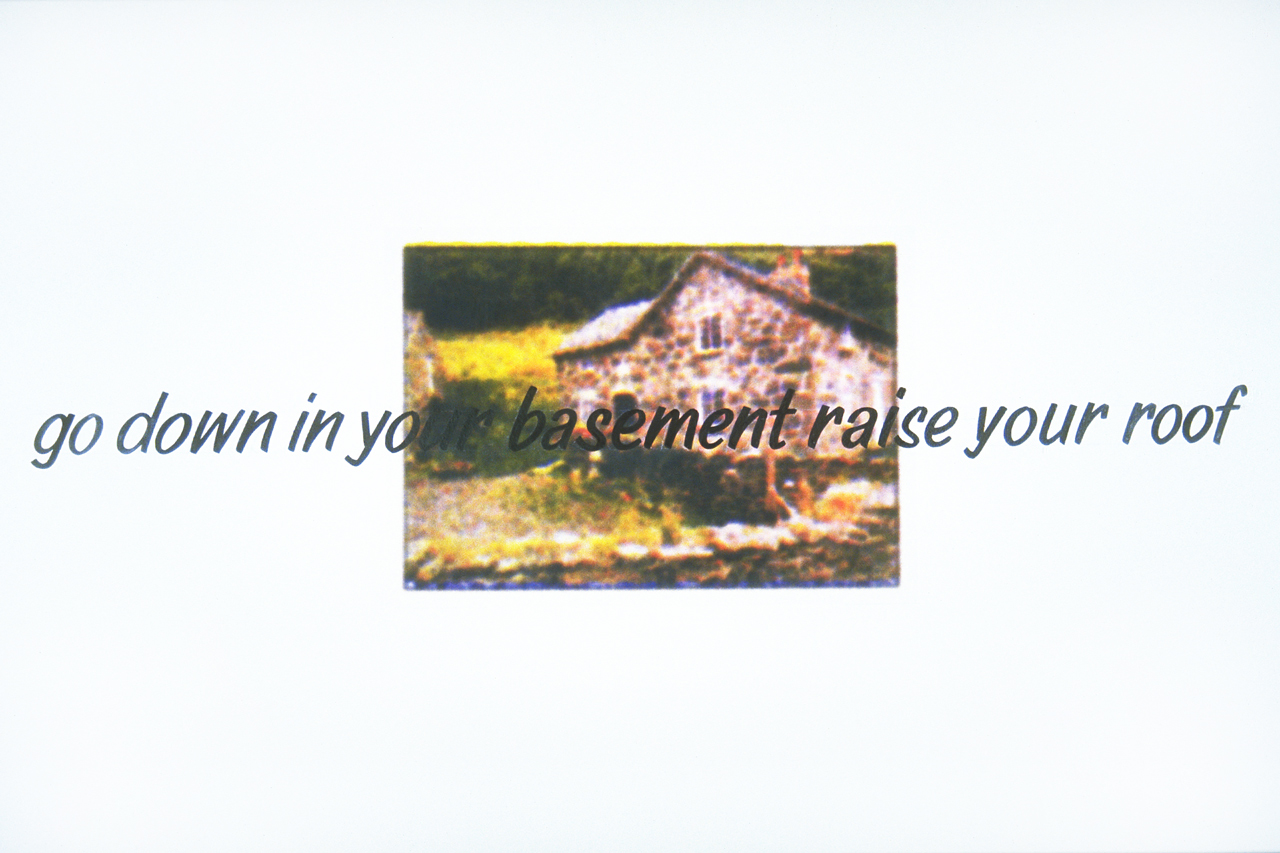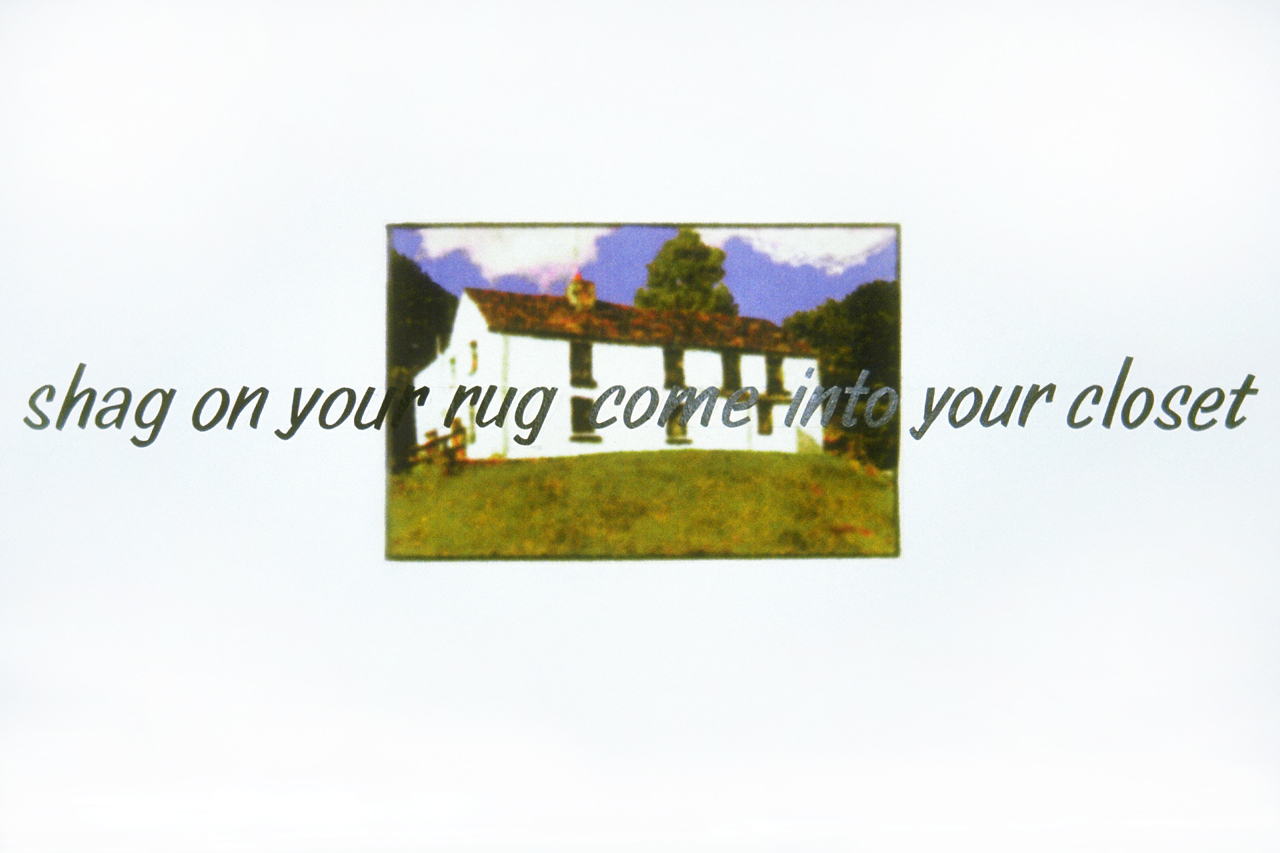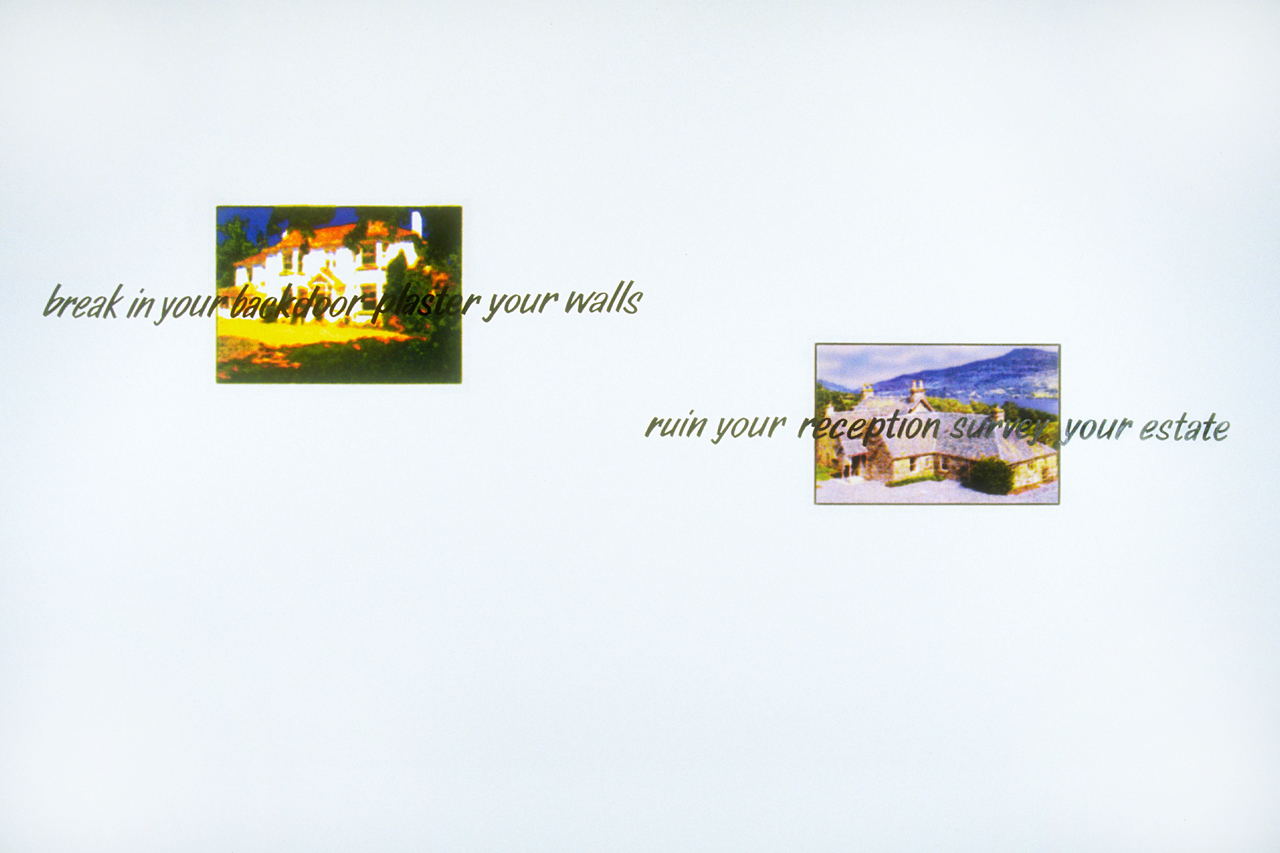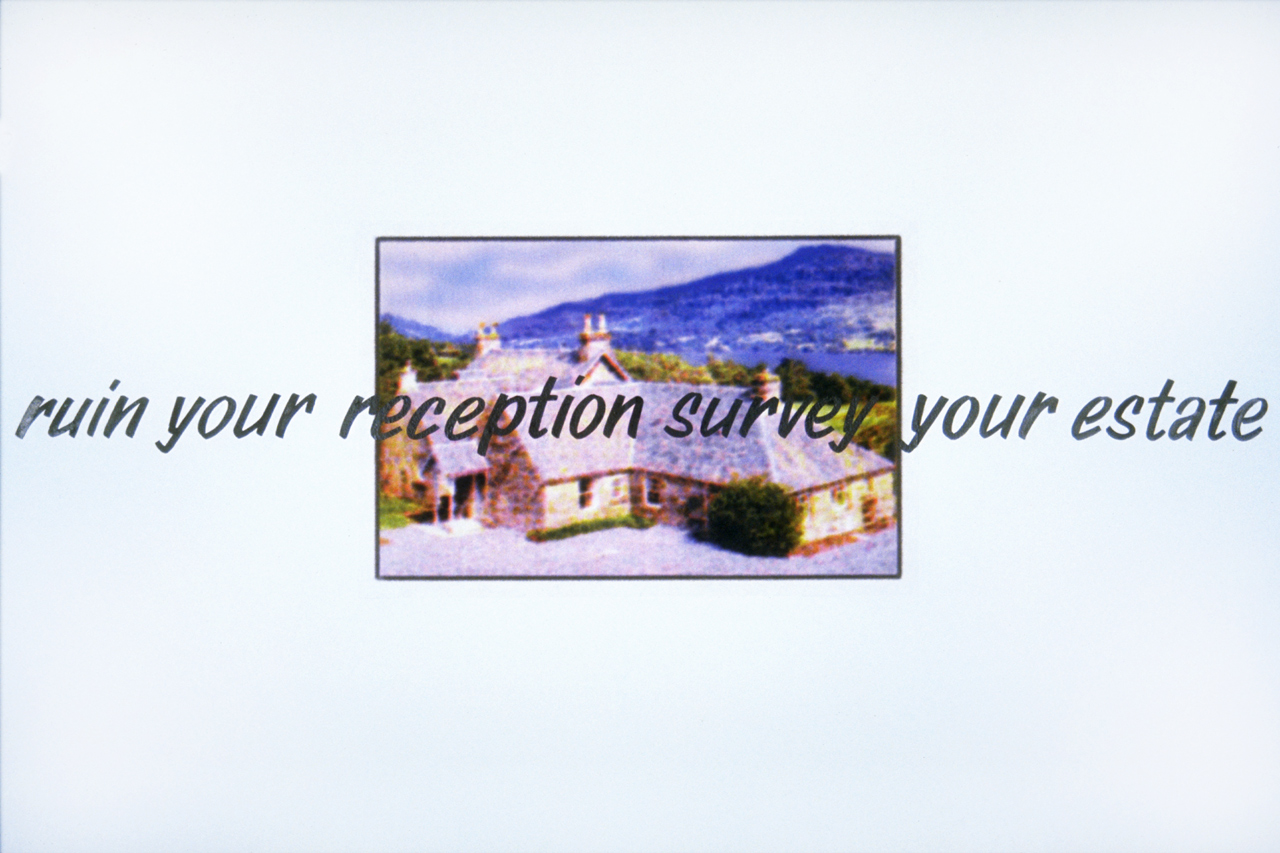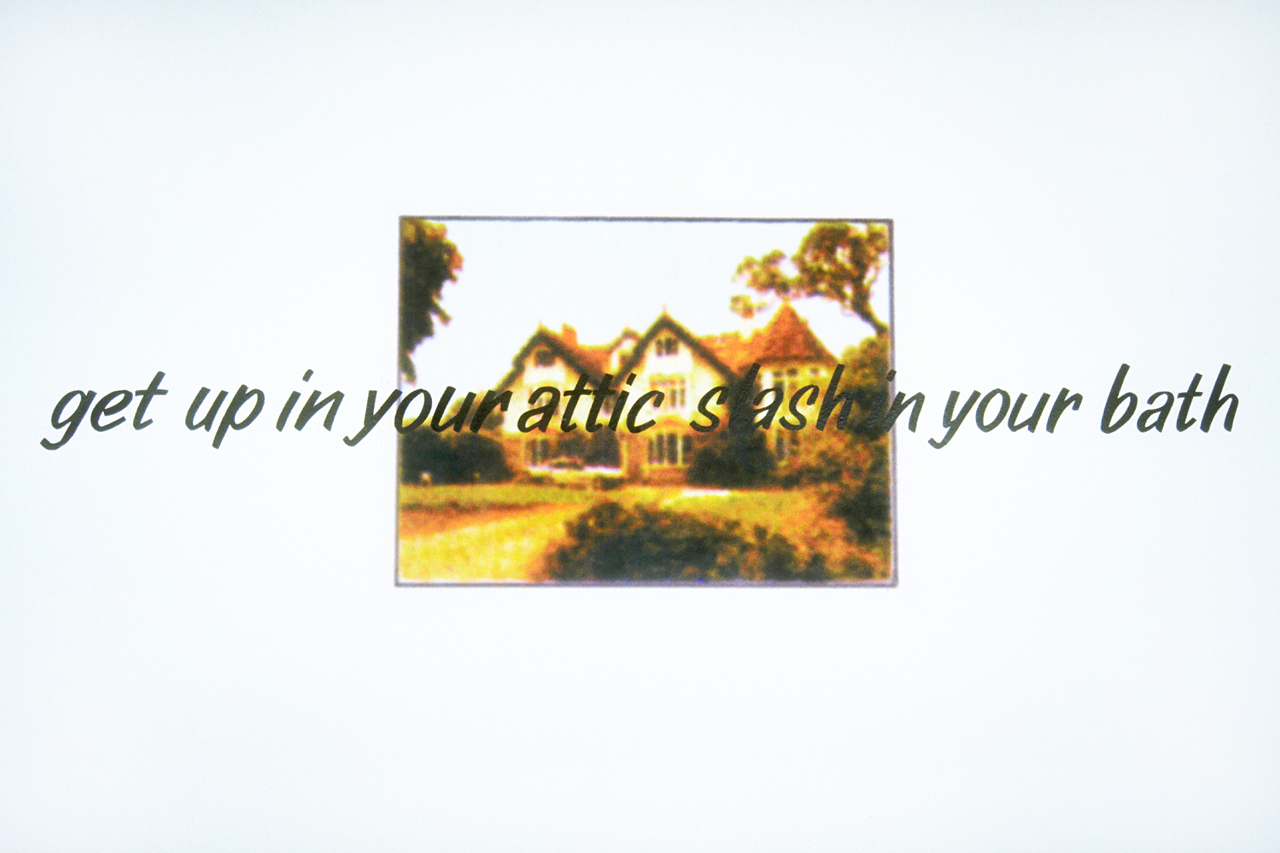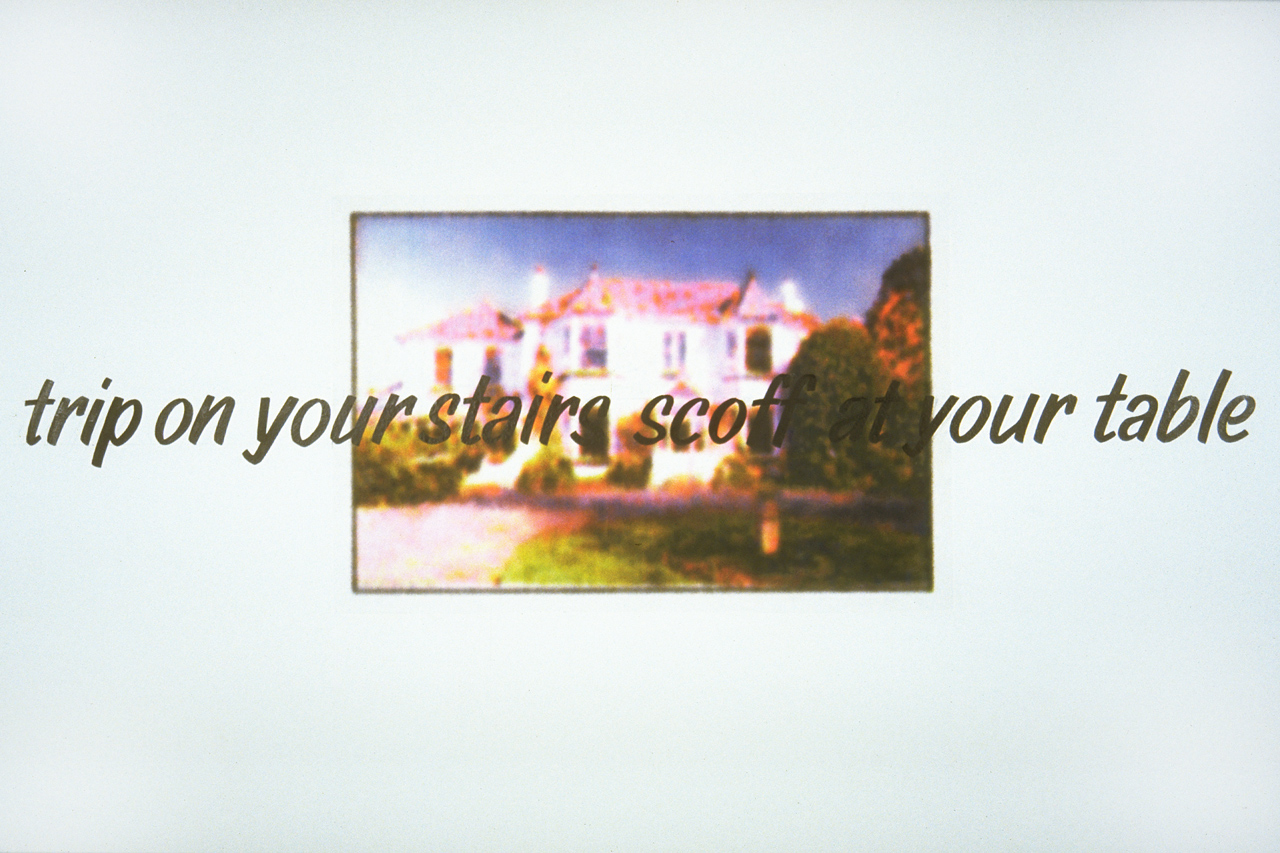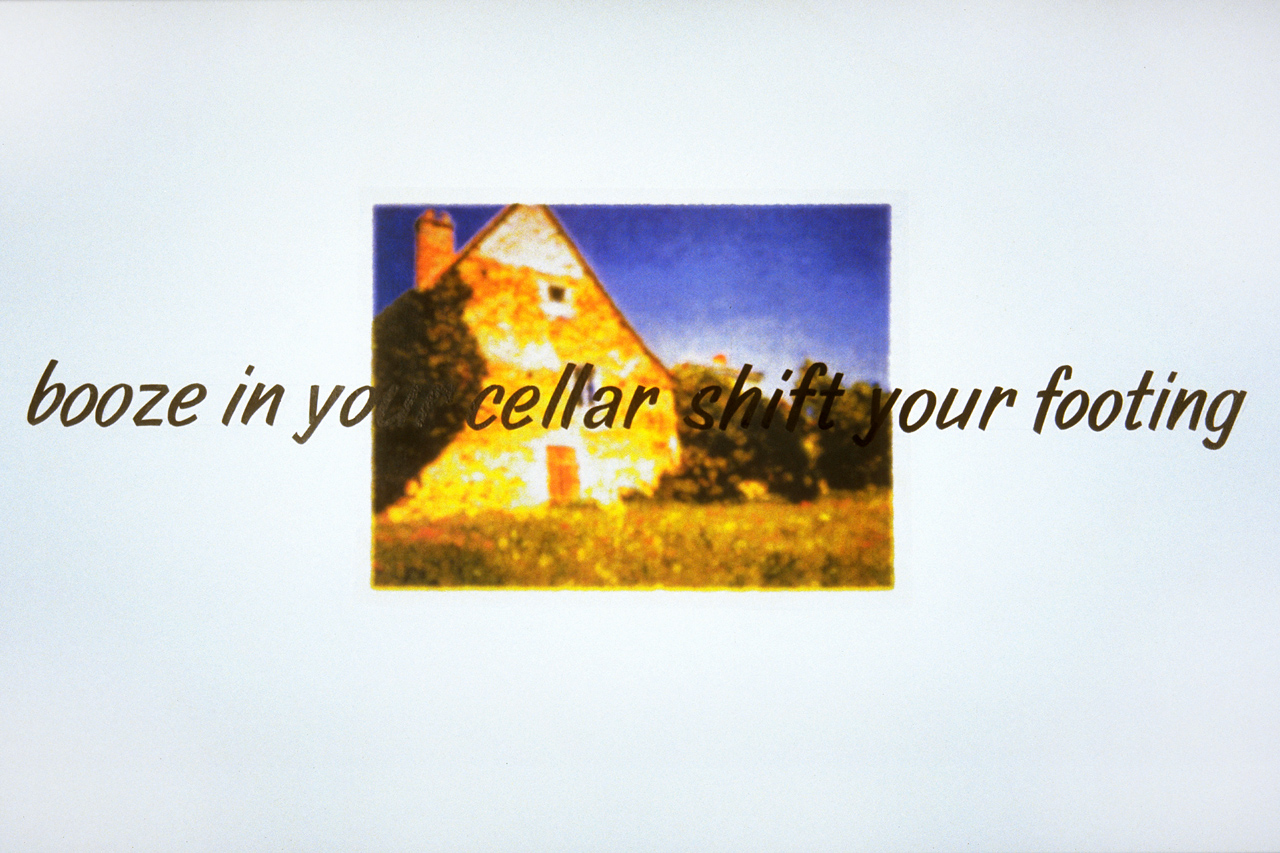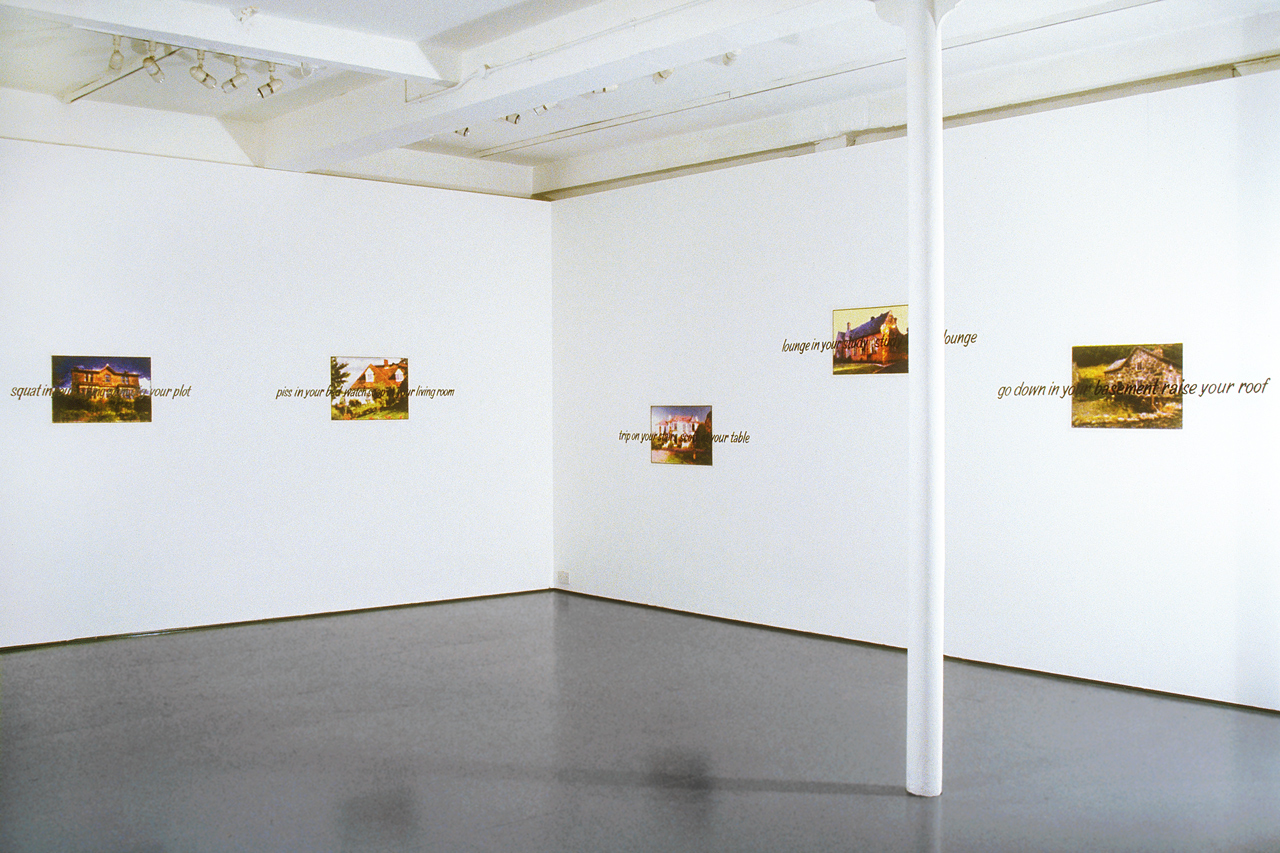Camerawork Gallery, London, 1996. An alternative, community gallery space and photo-lab in London's East End; a mixed area of mainly white working class people and asian immigrants, with a high level of poverty, homelessness, and unemployment. Much of the community around Camerawork lives in local government housing or 'council flats', rarely visiting Camerawork's exhibitions or darkrooms. The gallery is on a main street with a large 'store-front' window area, the interior is clearly visible from the street.
them what trespass
attempted to annex the gallery to the street by utilising
bill-posting and sign-writing as non-gallery approaches to display.
The images pasted to the gallery walls were grabbed from miniscule
'Property Gallery' images in the upmarket Sunday newspapers that advertise
desirable rural houses for sale. The minimal visual information contained
in such low-resolution images was digitally enhanced to fabricate,
in a vernacular of middle-class desire, highly idealised 'chocolate-box
impressionist' images of home.
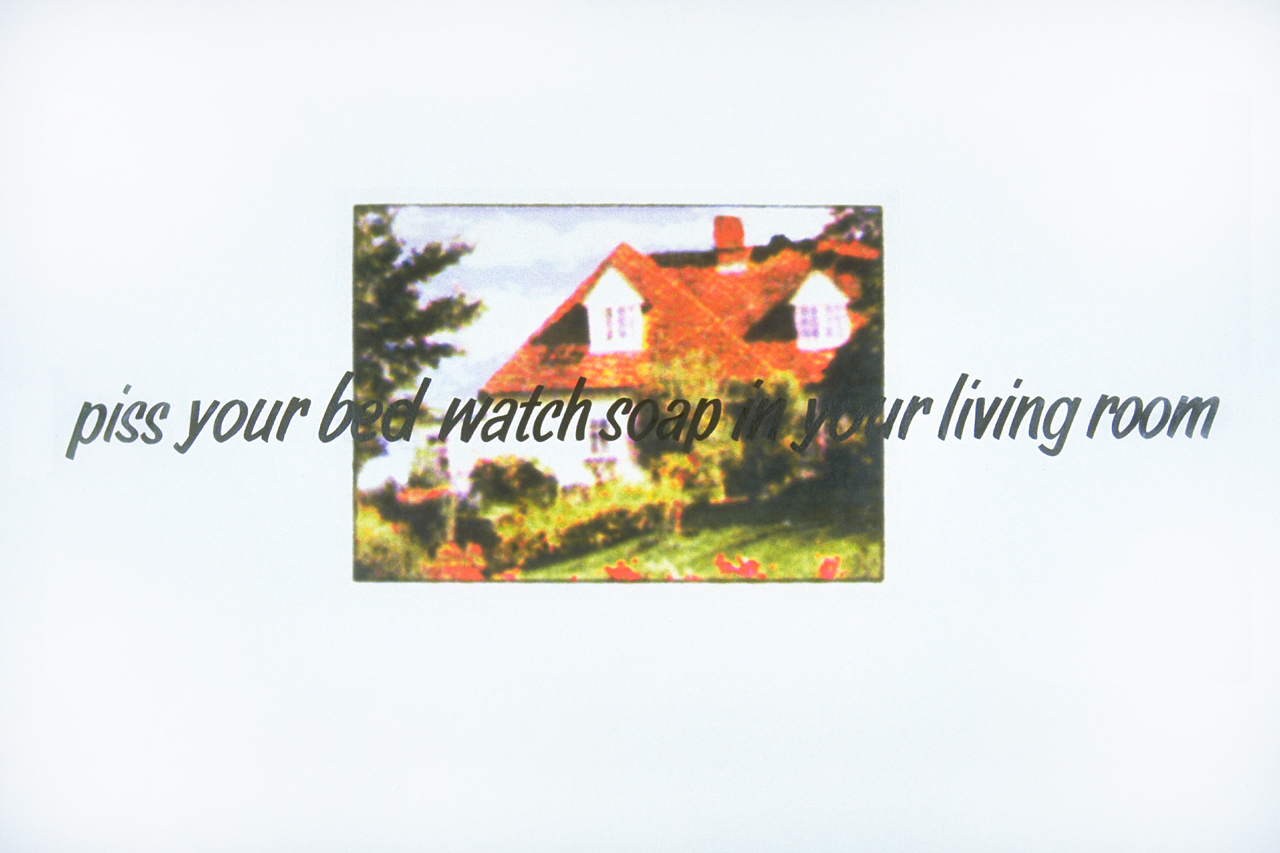
Output as electrostatically-printed posters, the images were overlayed - and negated - on the gallery wall with lines of hand-painted text; the incongruous and abusive language of the texts physically and verbally dislocating the seeming tranquility of the image-space. A commonplace encounter of the rural with the urban.
